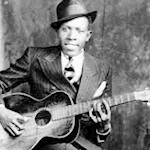
The history of blues music in the United States is deeply rooted in the African American experience, and its evolution over the years has had a profound impact on the broader musical landscape. Blues originated in the late 19th century, with its roots in African musical traditions, spirituals, work songs, and field hollers. It grew and developed in the rural areas of the Southern United States, particularly in Mississippi, Louisiana, Texas, and other states with large African American populations.
Early Blues
Delta Blues: Often considered the earliest form of blues, Delta blues emerged in the Mississippi Delta region. Artists like Robert Johnson, Son House, and Charley Patton played a crucial role in shaping this style, characterized by its raw sound, slide guitar techniques, and emotional expression.
Urban Blues: As African Americans moved to urban areas during the Great Migration, blues evolved, adapting to the faster pace of city life. Chicago became a major hub for urban blues, with artists like Muddy Waters and Howlin' Wolf contributing to the electrification of the genre.
Classic Blues Era (1920s-1930s)
During the 1920s and 1930s, the classic blues era saw the rise of female blues singers like Bessie Smith and Ma Rainey. These artists often performed with jazz-influenced bands and laid the groundwork for future developments in blues and popular music.
Electric Blues and R&B (1940s-1950s)
The post-World War II era saw the advent of electric blues, where artists started using amplified instruments. Innovators like Muddy Waters and Howlin' Wolf played a crucial role in this transition. This period also laid the foundation for rhythm and blues (R&B), a genre that incorporated elements of blues, jazz, and gospel.
British Invasion (1960s)
The so-called British Invasion of the 1960s had a significant impact on the popularity of blues music. British rock bands, particularly The Rolling Stones, The Yardbirds, and The Animals, were heavily influenced by American blues. These British bands reintroduced blues music to American audiences, often covering songs by blues legends and bringing attention to the original artists.
The Rolling Stones, in particular, played a crucial role in popularizing blues among a younger audience. Their early albums, such as "The Rolling Stones" (1964) and "The Rolling Stones No. 2" (1965), featured blues covers and helped bring attention to the works of blues musicians like Howlin' Wolf and Willie Dixon.
Eric Clapton, another influential figure of the British blues scene, played a significant role in popularizing the blues guitar style. His work with bands like The Yardbirds, John Mayall & the Bluesbreakers, and Cream showcased his deep appreciation for blues music.
The British Invasion not only introduced American audiences to blues but also helped renew interest in the genre among a younger generation. It played a crucial role in the development of blues-based rock, which became a dominant force in the late 1960s and beyond. The fusion of blues with rock elements laid the groundwork for the emergence of various sub-genres, including blues rock and hard rock.
